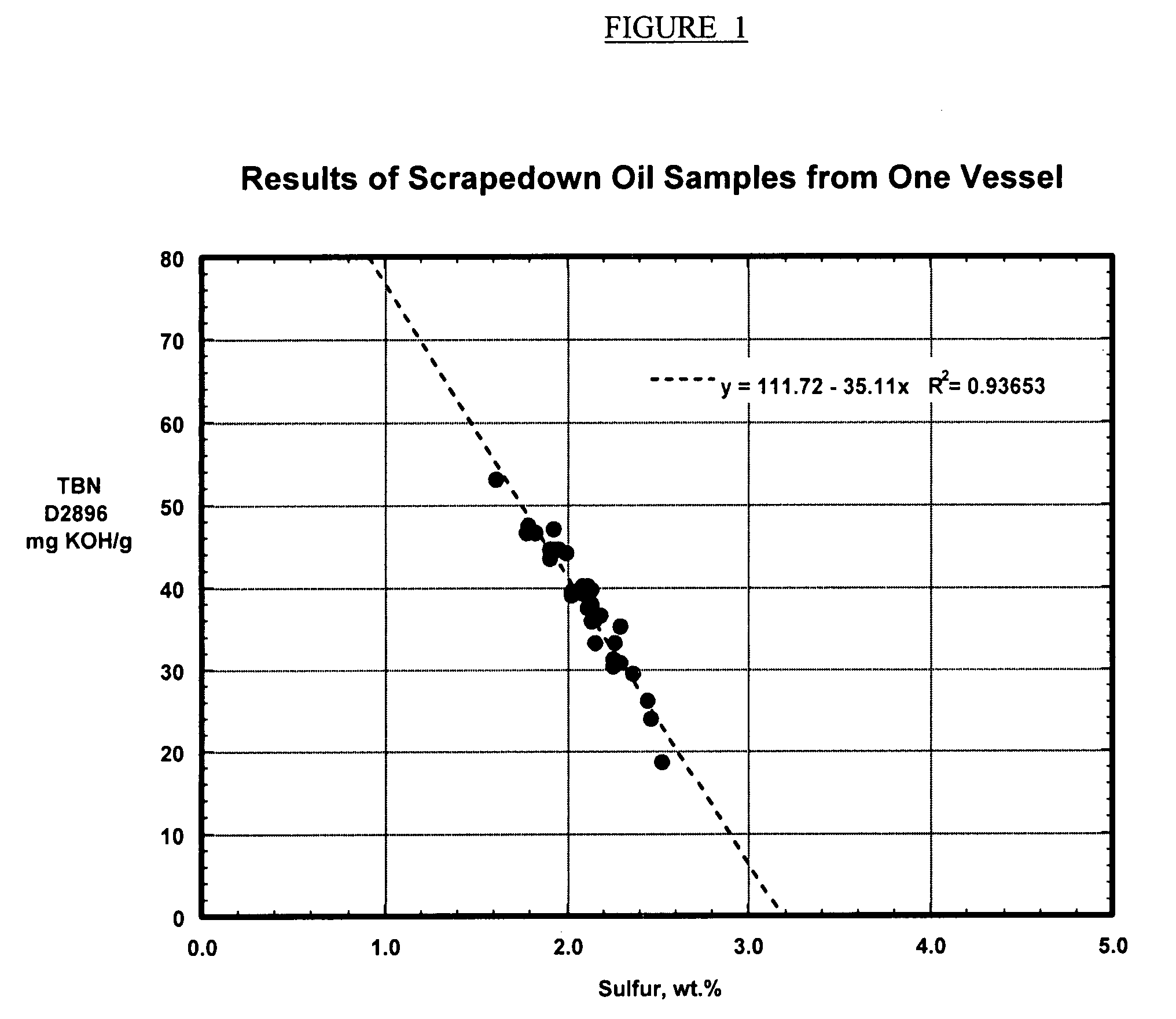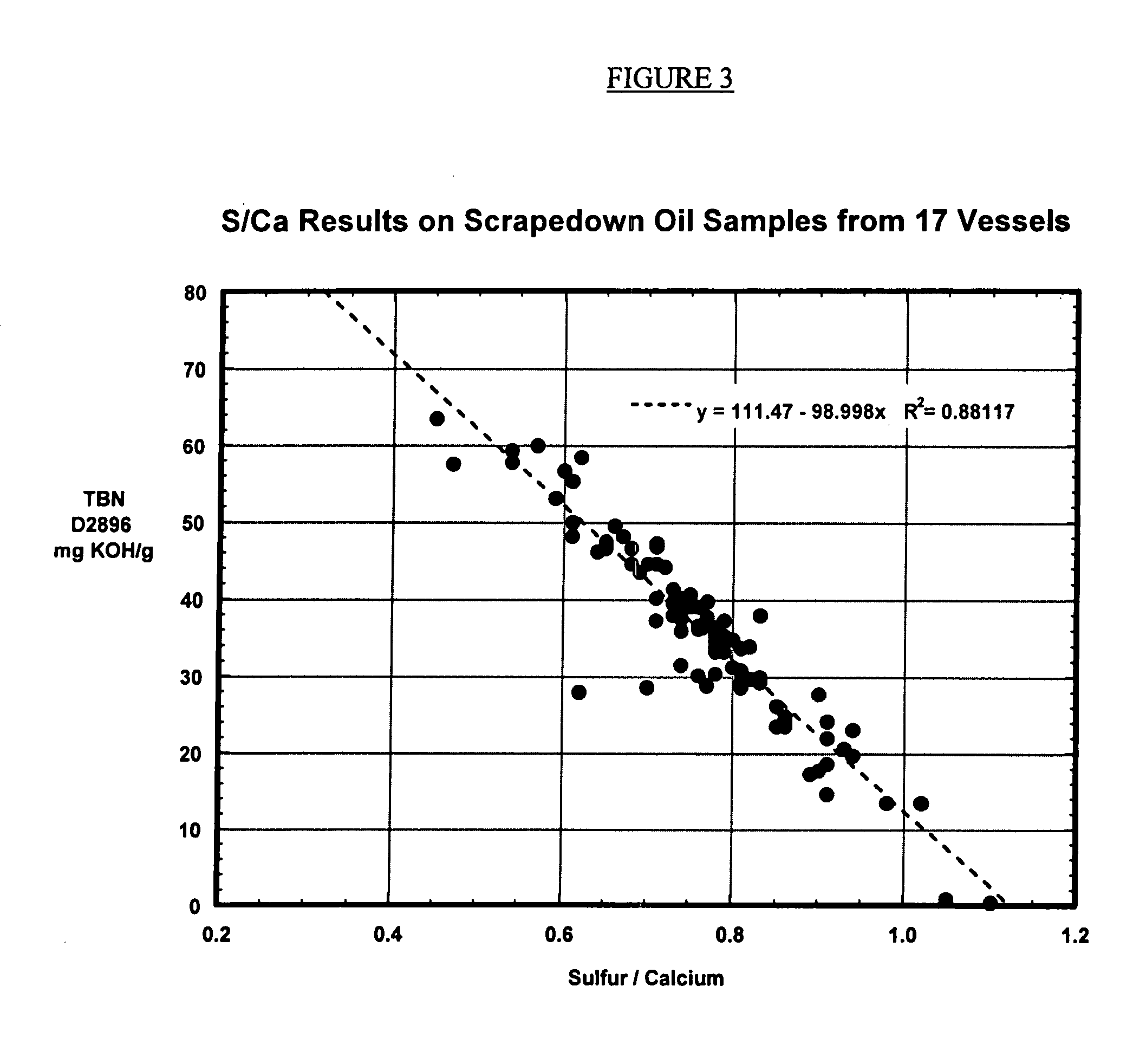Determination of total base number in marine engine lubricants by elements
a technology of total base number and marine engine, which is applied in chemical methods analysis, instruments, food testing, etc., can solve the problems of not providing equipment operators with immediate information about the condition of lubricant, lapse in time can be critical, and none of these devices measures tbn and wear debris elements with a single analyzer
- Summary
- Abstract
- Description
- Claims
- Application Information
AI Technical Summary
Benefits of technology
Problems solved by technology
Method used
Image
Examples
example 1
[0025]In this example 32 scrapedown (used) cylinder oil samples were collected from one marine vessel's crosshead diesel engine over a 4.5 month period. The TBN of the samples was measured by ASTM test method D2896, and the amount of sulfur in the oil was measured by XRF. A plot of TBN versus sulfur is shown in FIG. 1. As can be seen, there is a very good correlation between sulfur and TBN.
example 2
[0026]Scrapedown oil samples from 16 other vessels were analyzed in example 1. A plot of this data along with the data from example 1 is shown in FIG. 2. As can be seen, the correlation in this instance is poor apparently because each engine has its own combustion characteristics; however, when the amount of calcium was also determined, the sulfur to calcium ratio was found to correlate reasonably well with the oil's TBN as is shown in FIG. 3. FIG. 4 is a plot of the data of FIG. 3 with two data points that appear to be anomalous removed. Removal of these data points improves the correlation from R2=0.88 to R2=0.93.
PUM
| Property | Measurement | Unit |
|---|---|---|
| spectroscopic method | aaaaa | aaaaa |
| XRF | aaaaa | aaaaa |
| Chemical and | aaaaa | aaaaa |
Abstract
Description
Claims
Application Information
 Login to View More
Login to View More - R&D
- Intellectual Property
- Life Sciences
- Materials
- Tech Scout
- Unparalleled Data Quality
- Higher Quality Content
- 60% Fewer Hallucinations
Browse by: Latest US Patents, China's latest patents, Technical Efficacy Thesaurus, Application Domain, Technology Topic, Popular Technical Reports.
© 2025 PatSnap. All rights reserved.Legal|Privacy policy|Modern Slavery Act Transparency Statement|Sitemap|About US| Contact US: help@patsnap.com



